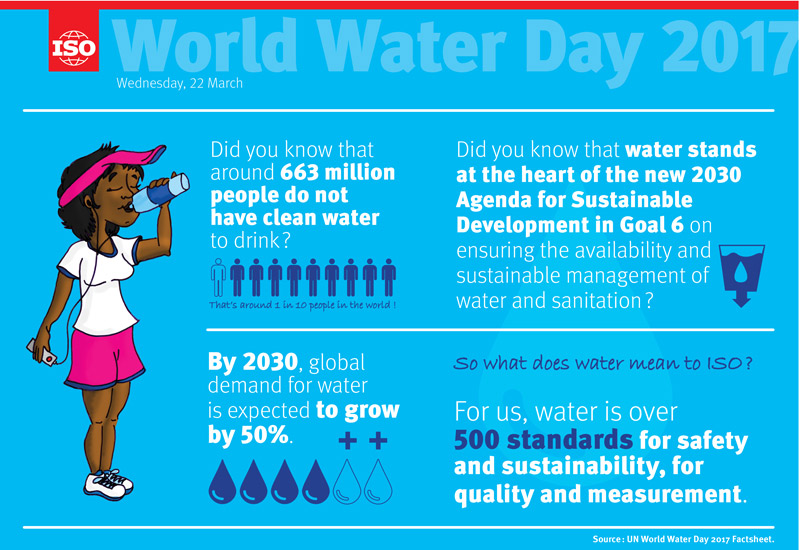Right now, 663 million people don’t have access to safe water. Without this basic service, they have no choice but to drink dirty water that could kill them. Some 2.4 billion people – one in three – don’t have access to a proper toilet. Many are forced to go in the open, spreading dangerous pathogens. Can you imagine life without safe water to drink?
Every year on 22 March, people worldwide celebrate World Water Day. At ISO, it’s a day for us to take stock of how ISO standards are making a difference for people who do not have the water they need. Whether it’s billions of gallons of drinking water lost every day due to leaky pipes, lead poisoning in water or untreated wastewater, ISO standards have a practical contribution to make in alleviating a number of these problems.
This year’s theme “Why waste water?” invites us to think about how ISO standards are helping to respond to wastewater in the quest for sustainable development. Areas addressed by standards offer best practice on the treatment and use of water, the provision of water services and the use of irrigation in agriculture, manufacturing and construction.
Treating and reusing wastewater in agriculture can not only provide an oasis in the desert, it can boost economies and save communities. Now, a recently published ISO 16075 series of standards (developed by technical committee ISO/TC 282, Water reuse, provides guidelines for treated wastewater use in irrigation projects. In addition, a new International Workshop Agreement (IWA 20), developed in collaboration with the Standards Institution of Israel, offers information destined to advance the worldwide use of a sustainable drip irrigation method. These are just some of the ways ISO standards will continue to respond to the world’s wastewater challenges.
Water is fundamental to life. It is vital for more inclusive and sustainable development. This is why water stands at the heart of the new 2030 Agenda for Sustainable Development, highlighted in Goal 6 on ensuring the availability and sustainable management of water and sanitation.
Ensuring universal access to safe and affordable drinking water by 2030 requires that we invest in adequate infrastructure, provide sanitation facilities and encourage hygiene at every level. Let’s not forget to invest in ISO International Standards – after all, we have 500-plus standards to make the water cycle work better for every living thing on the planet.
Learn more about the importance of ISO standards for water and discover the ISO and water brochure.


